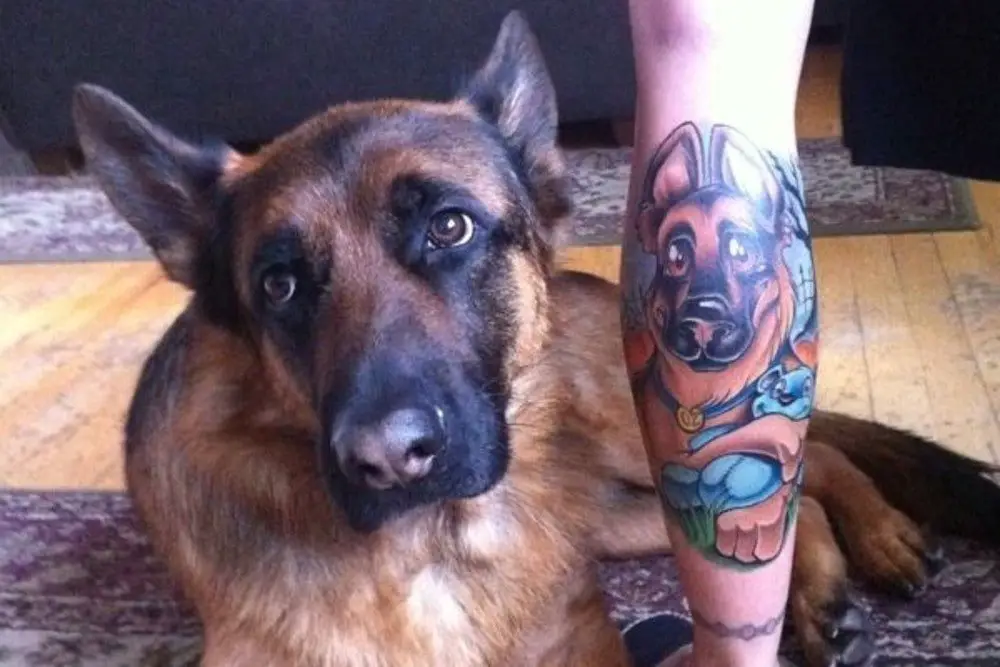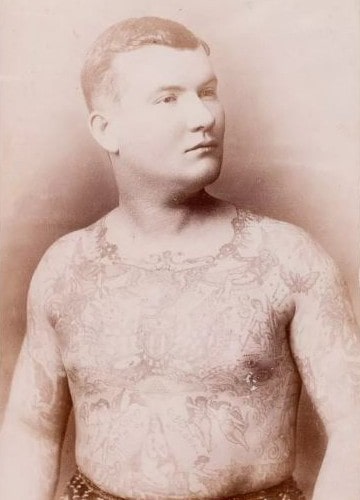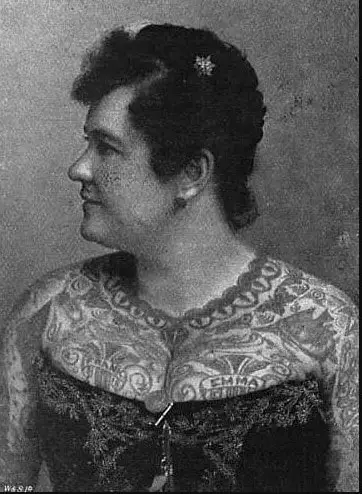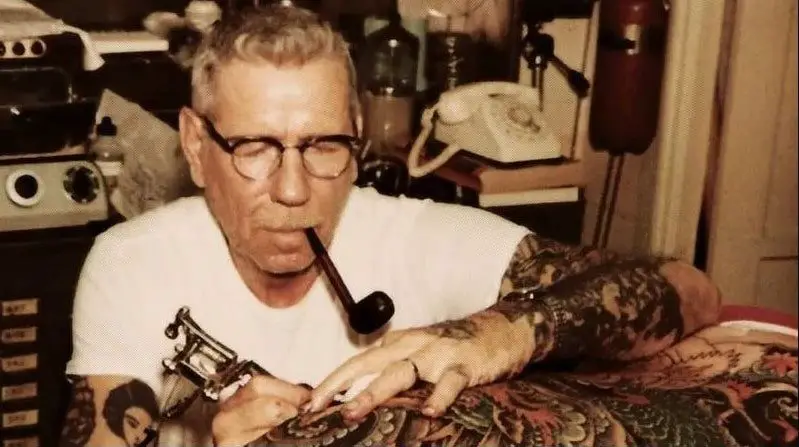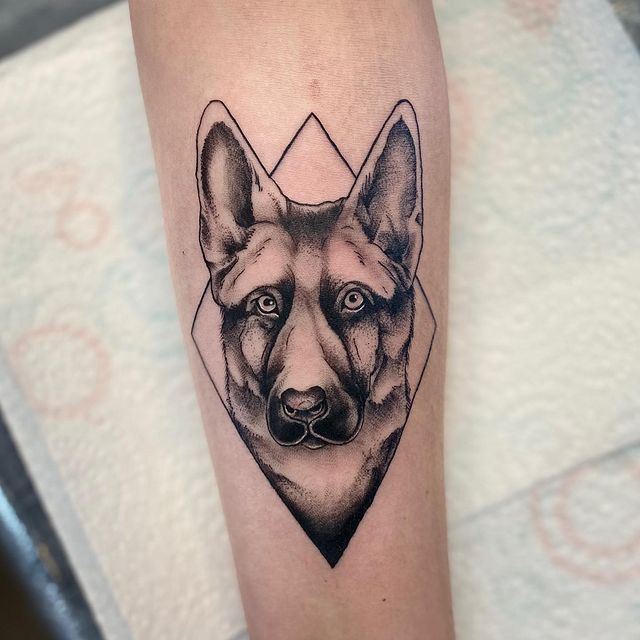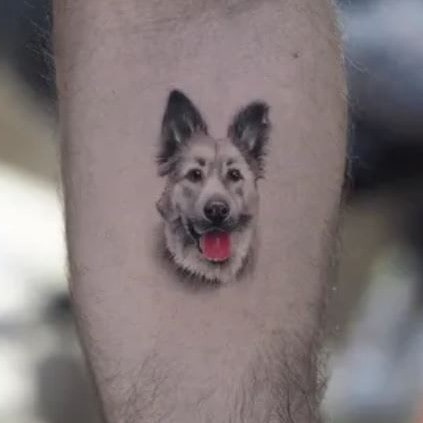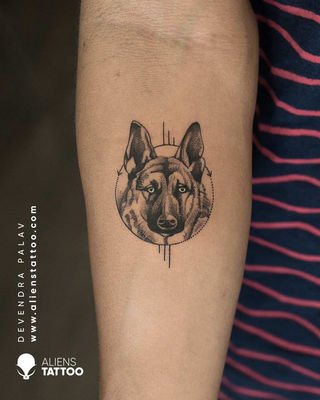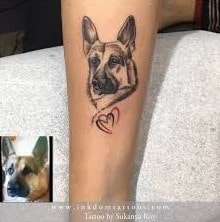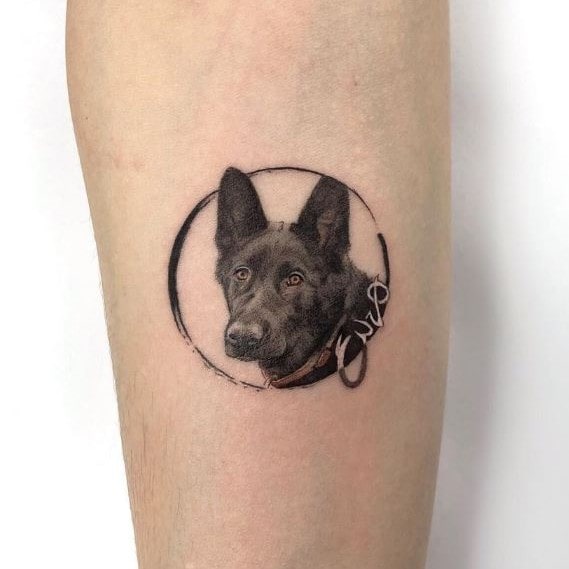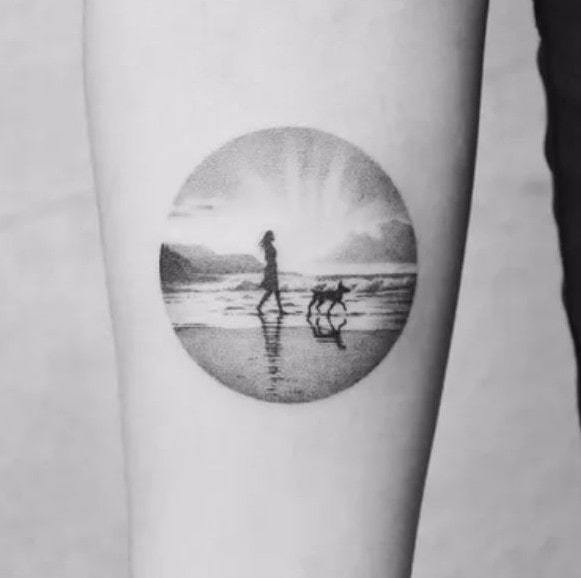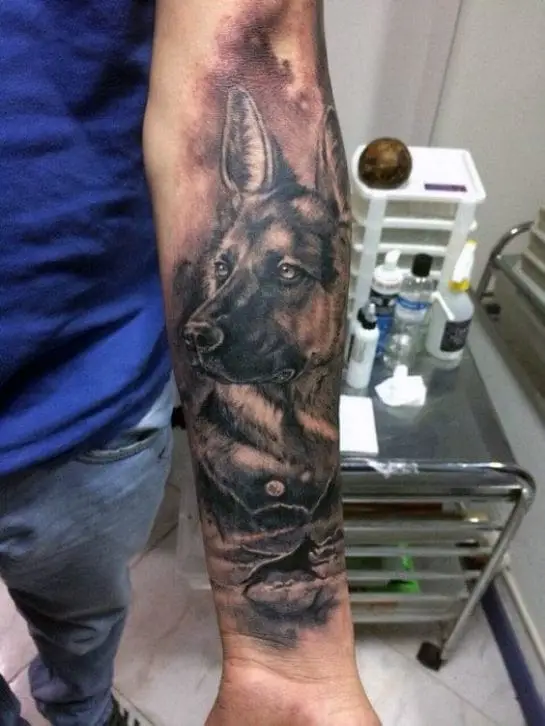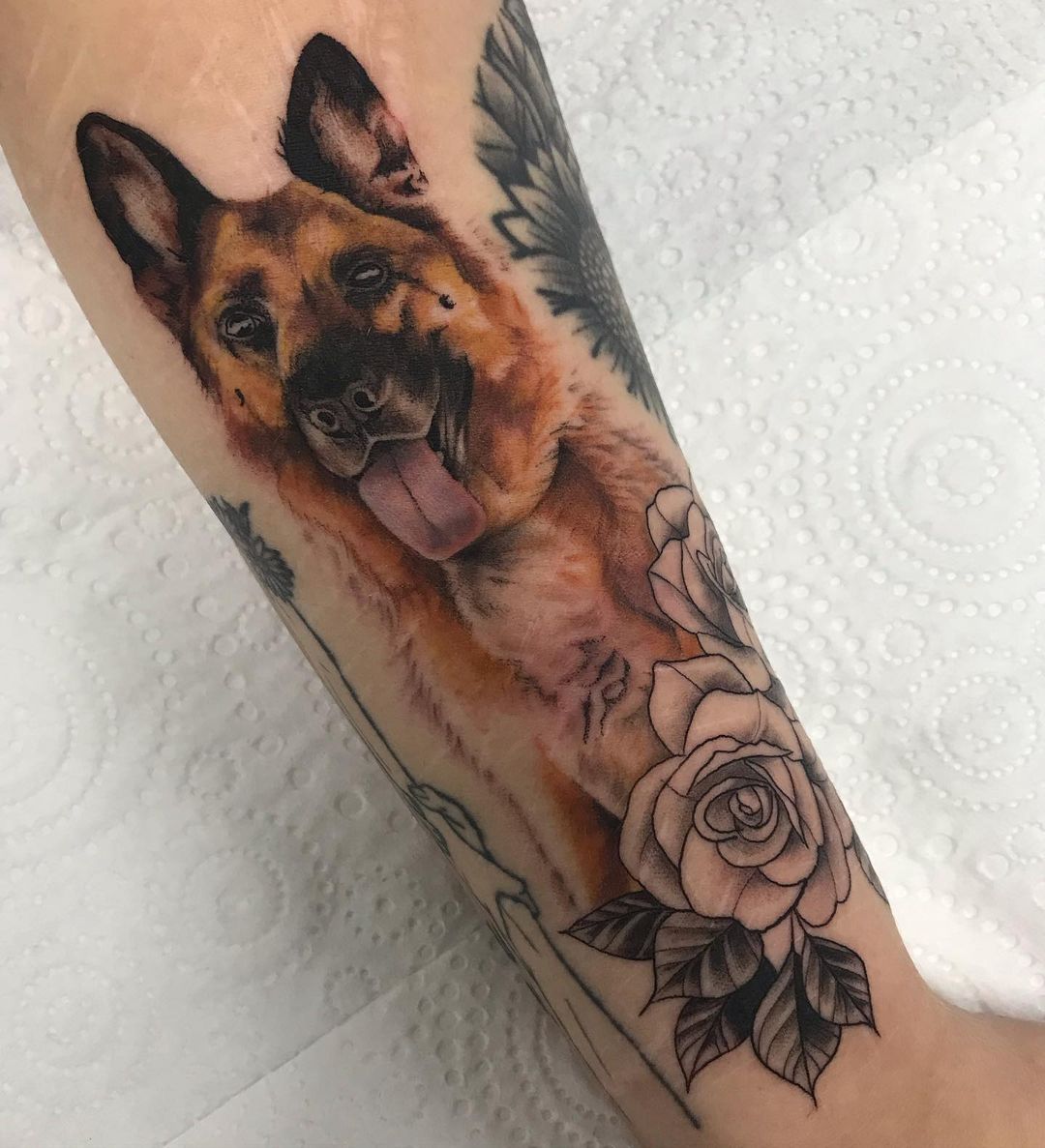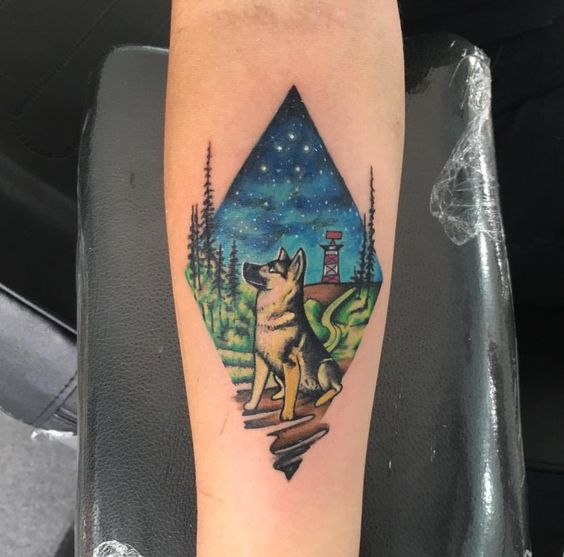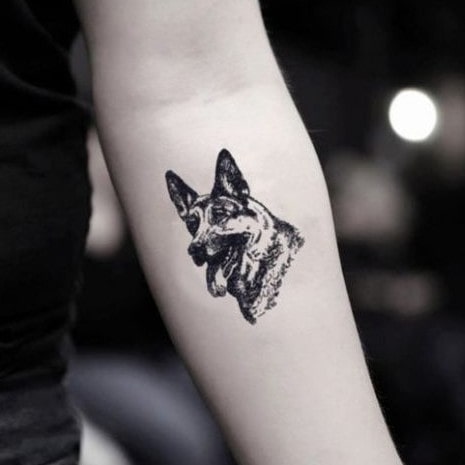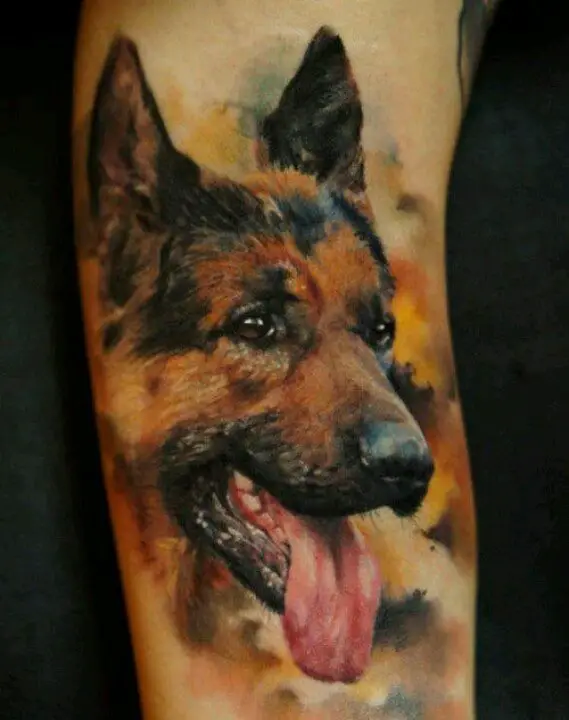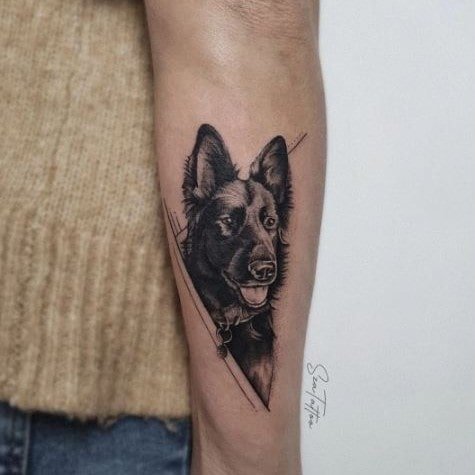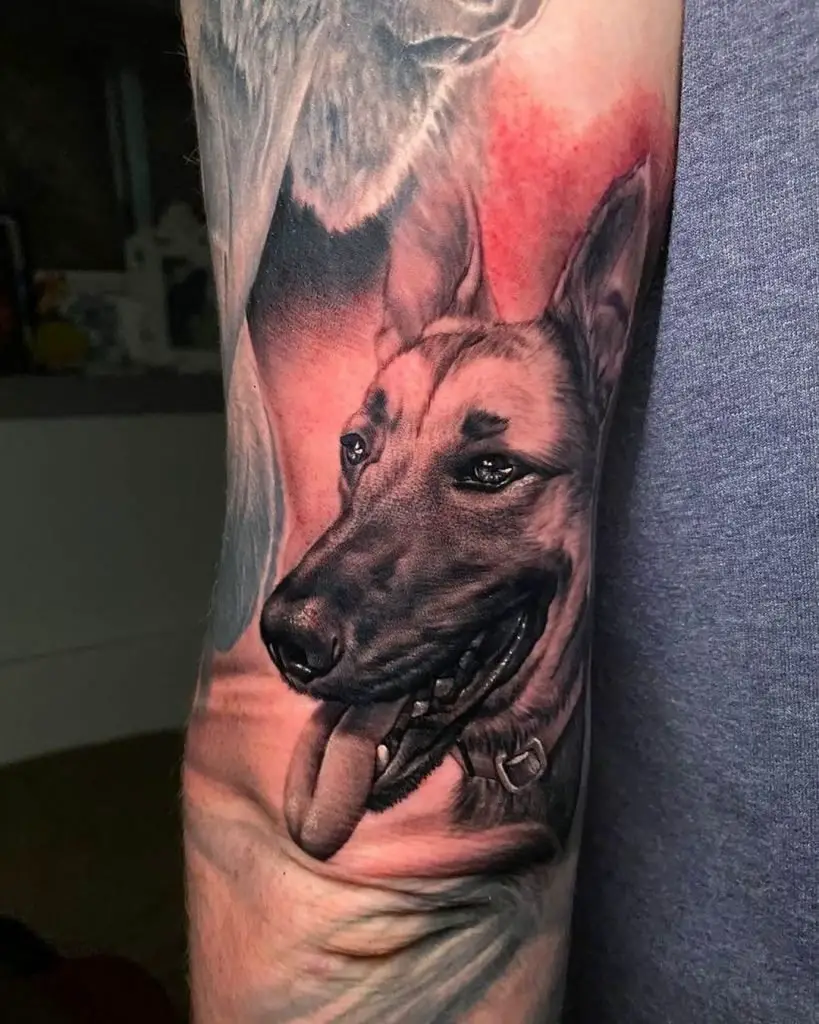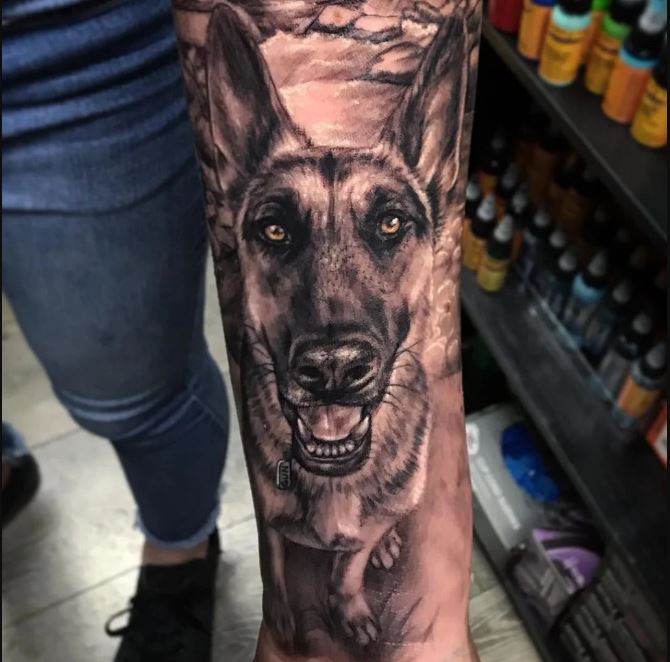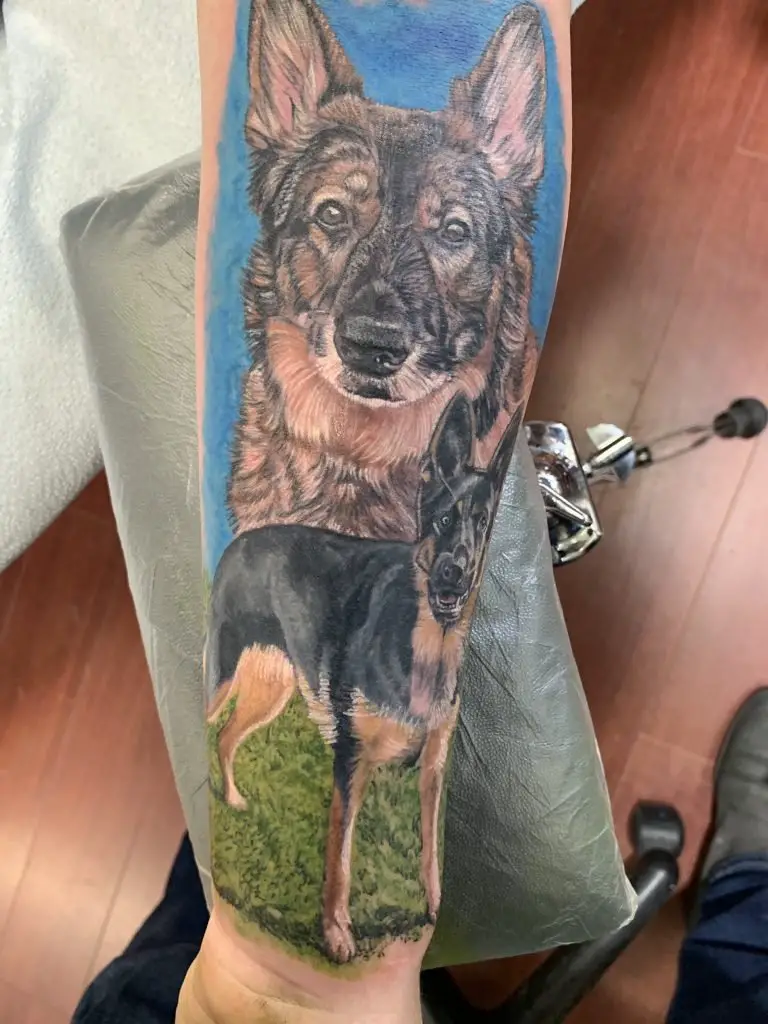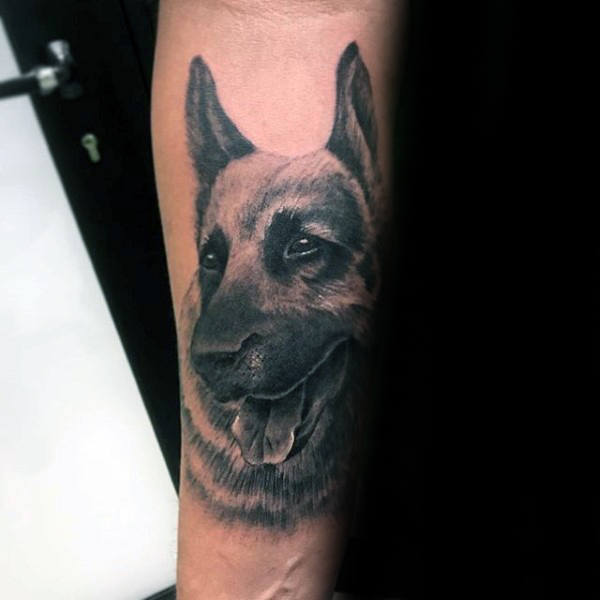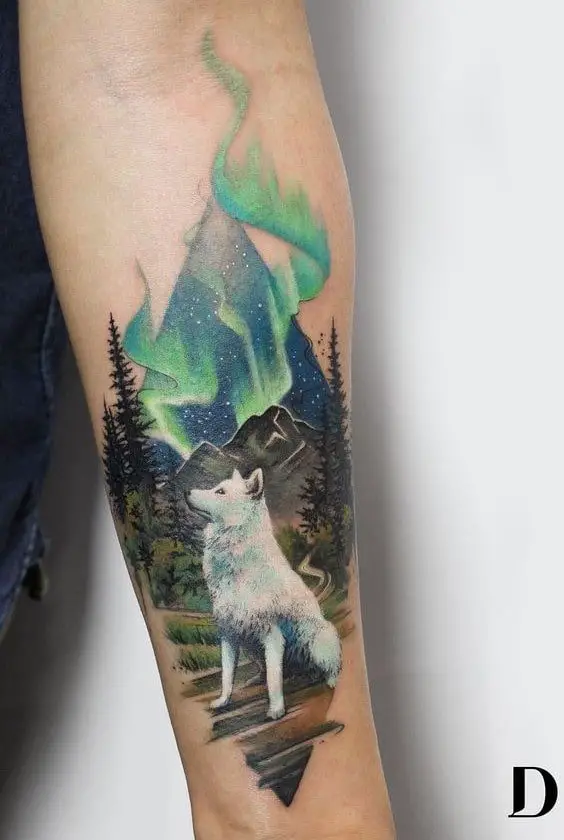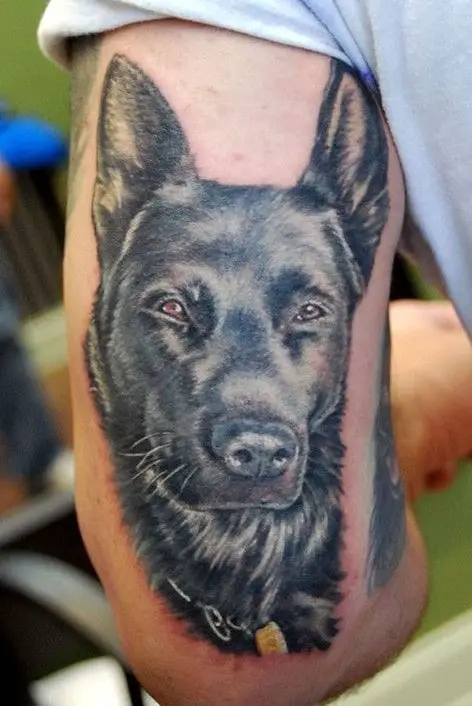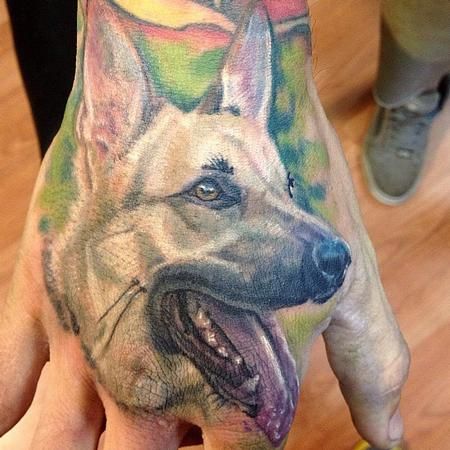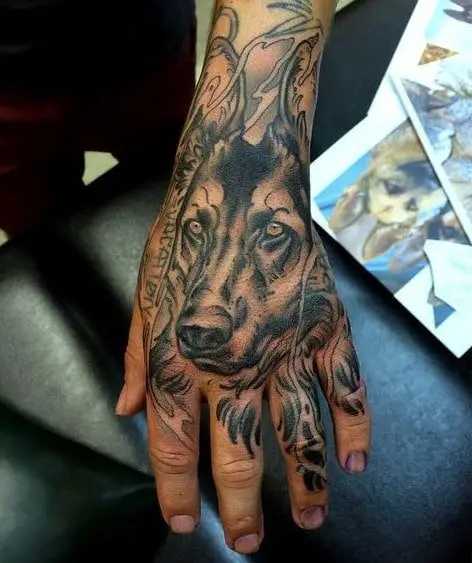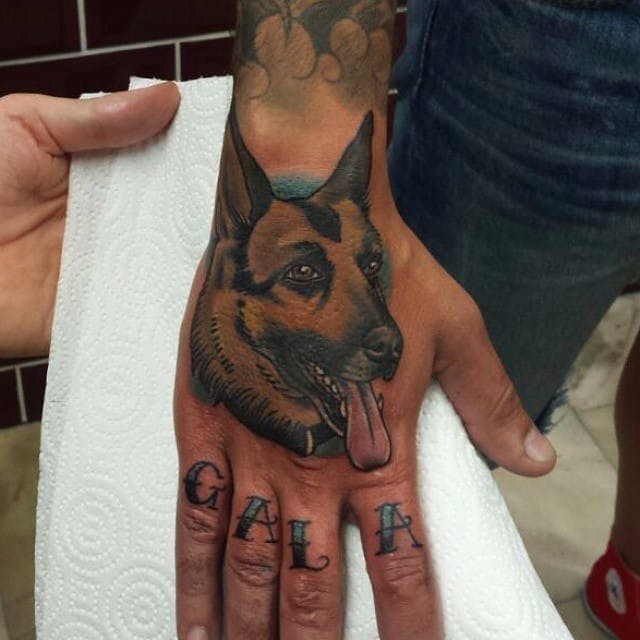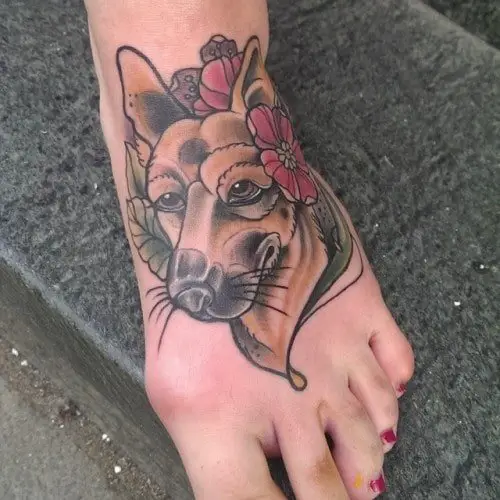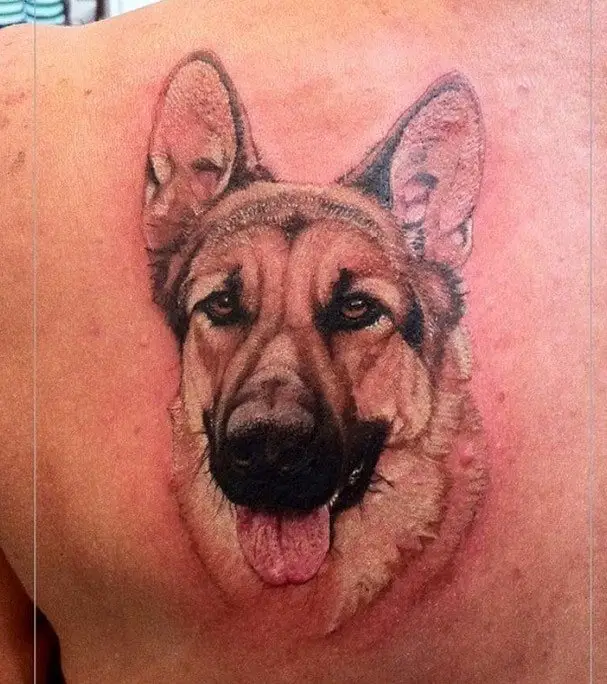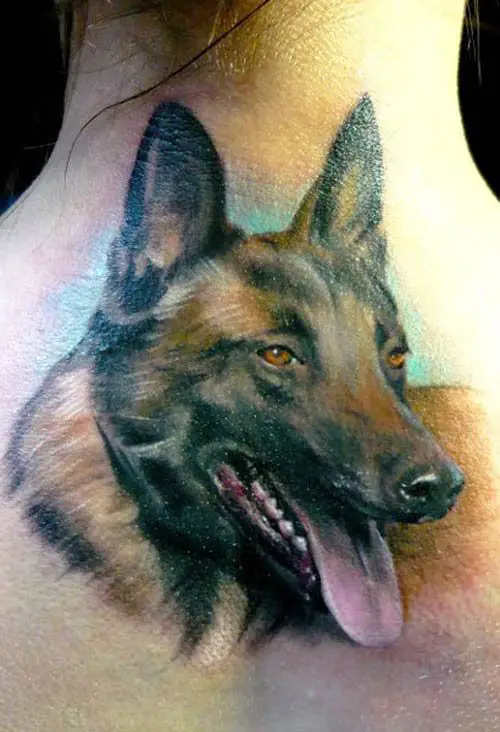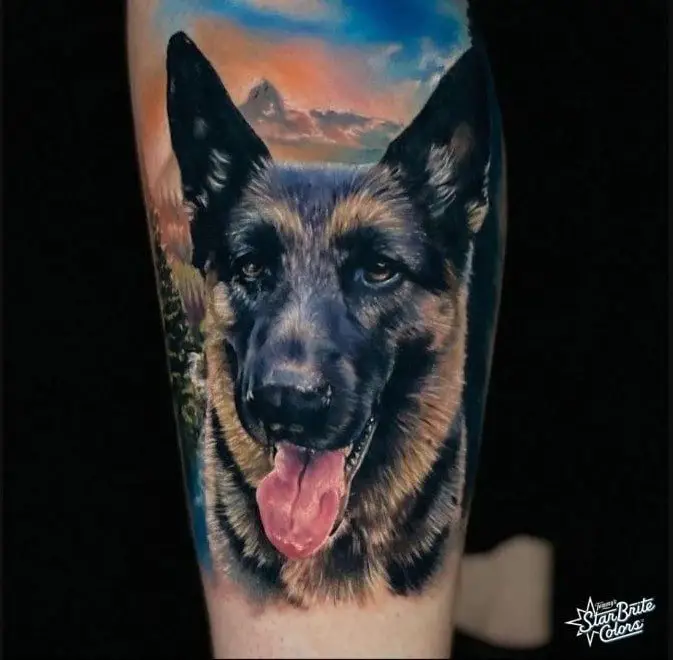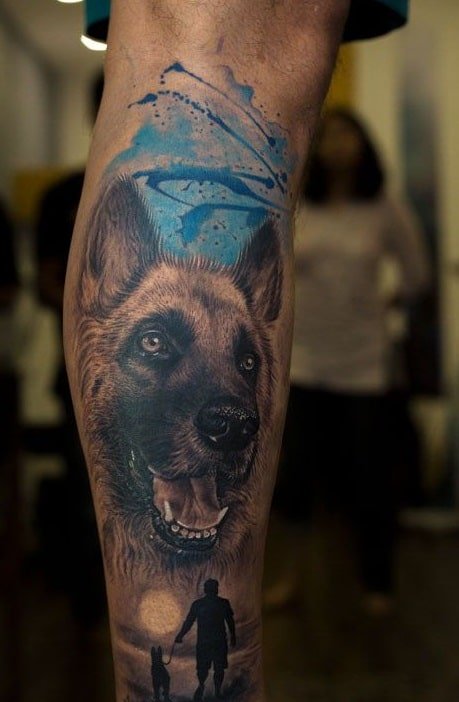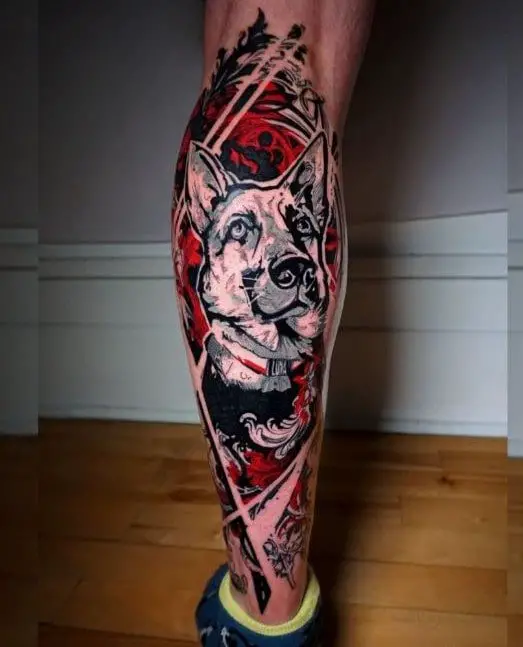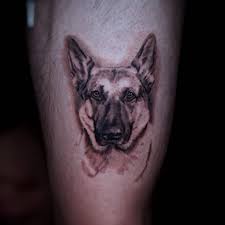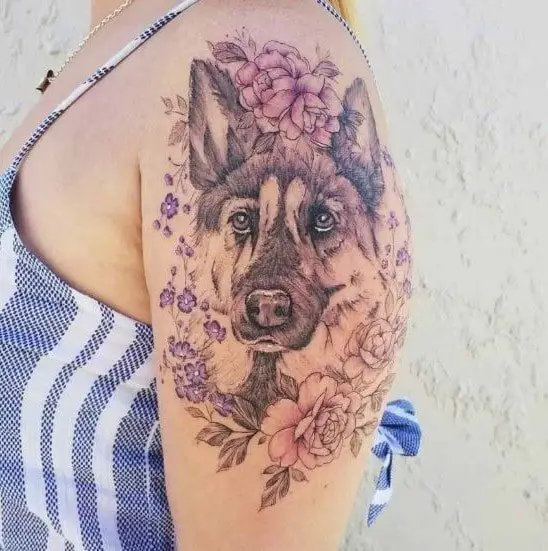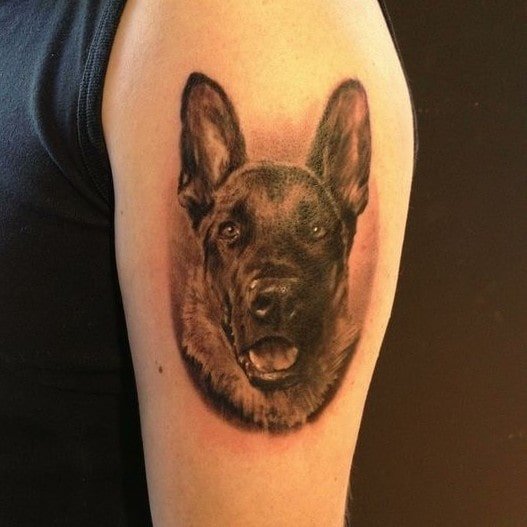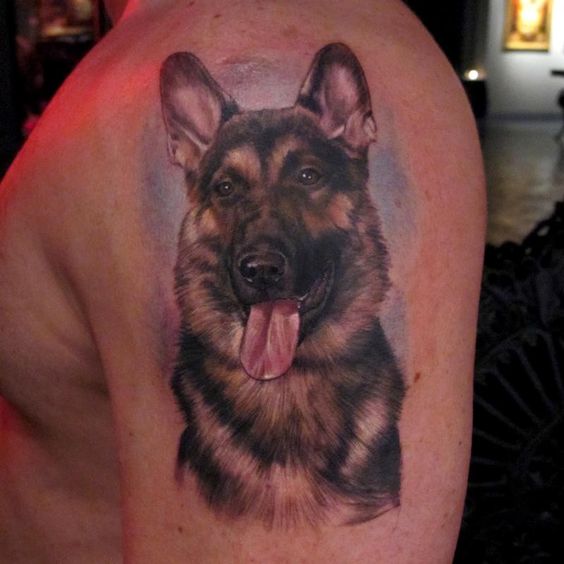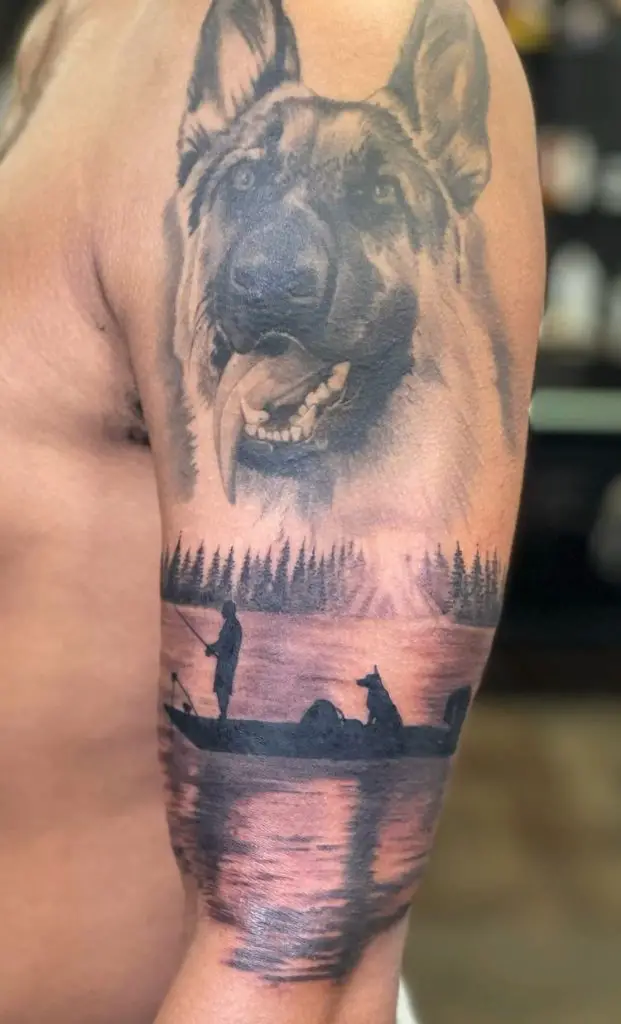Tattoos, Millennials love them, and Grandparents hate them. They are currently a trendy way to permanently express mantras, memories, loved ones, and our favorite four-legged best friend.
This article has pictures of over fifty original German Shepherd tattoos but first, let’s look into the history of tattoos.
The History of Tattoos
The first evidence of tattoo art comes from 5000 BCE and is defined as an indelible mark on the body by putting pigment under the skin. Tattoos have taken many forms and meanings throughout history and across cultures.
In 1871 Charles Darwin wrote, “there was no country in the world that did not practice tattooing or some other form of permanent body decoration.”
A tattoo is a component of one’s identity on a personal level. Over the years, tattoos and piercings have always been visible ways of distinguishing people within a group and associations within a community.
Tattoos have symbolically represented the coming of age, bravery, power and class, marital status, and negative stigmas historically and culturally around the world.
Tattoos were not normal or socially acceptable in Western culture until around the middle of the 20th century. Until then, the tattooed community was frowned upon and found mainly in the entertainment business.
However, fully tattooed people became a big attraction in and of themselves. In 1887 boxer John O’Reilly was known as the “Tattooed Irishman,” and his tattoos were called “hideous.”
Several women were known as the “Tattooed Lady” in sideshow acts in entertainment venues such as fairs or circuses. The first was Emma de Burgh in the late 1880s, who worked with her husband, who was also inked.
Tattoo perceptions and styles have evolved throughout the 20th century in Western culture over the past hundred years. Here is a breakdown through the years.
The 1900s and 1910s
Tattooing in the United States started among sailors along the East Coast and West Coast and worked its way inland.
Tattoos during this period were most commonly spotted on circus performers and sailors. Tattoos told the story of a person’s life and occupations. A sailor, for example, might have a tattoo of an anchor.
Tattoos became a sign of belonging within the sailing community. After enlisting, young sailors would be tattooed, almost like an initiation ritual.
From here, the ancient art form grew in popularity and began to serve a more functional purpose. Tattoos were used to help identify sailors who had fallen overboard or drowned.
Sailors would memorialize ports they traveled to with a tattoo. The tattoos represented the destination and the length of the voyage. A turtle tattoo meant a sailor had reached the equator, whereas a swallow tattoo represented a 5,000-mile expedition.
The 1920s
Cosmetic tattoos became quite popular among ladies in the 1920s. Because cosmetics were too expensive to buy, many people would get makeup trends tattooed on their faces. Eyebrows and lip liner were two popular makeup tattoos.
Tattoos were still uncommon in society and not considered socially acceptable. Tattoos were mostly donned by so-called outcasts, such as circus performers, sailors, and criminals. Most women would keep their cosmetic tattoos hidden because tattoos were socially taboo.
The 1930s
In the 1930s, social security numbers were introduced, and people were advised to memorize their numbers. Many people tattooed their social security numbers on their bodies to have them accessible.
However, society still frowned upon tattoos in general. People who tattooed their social security number did so more out of need than a want.
In the 1930s, new notions emerged in society, linking tattoos to suppressed sexual impulses. Albert Parry published a book in which he argued the entire process of obtaining a tattoo being unethical.
Upstanding citizens of society stigmatized tattoos with sailors, performers, and criminals.
The 1940s
Norman Keith Collins pioneered the classic ‘Sailor Jerry’ style of tattooing in the 1940s. He made his own pigments and used them in his tattoo designs to add color. Bold motifs and a plethora of colors characterize this decade’s classic designs.
Tattoos in the 1940s tended to be themed around nautical or military concepts. Due to WW2, there was also an increase in patriotic tattoos. Women entered the workforce in greater numbers during the war, as did the number of women who had tattoos.
Tattoo acceptance increased due to this fundamental shift in tattoo design. Because of its increased appeal, decorative ink emerged from the shadows and was worn significantly more frequently than in previous decades.
Many of the tattoos in the Sailor Jerry style are classic and timeless, with people still opting for similar designs today.
The 1950s
Tattoos became associated with masculinity in the 1950s. While tattoos were fashionable, especially among ‘bad boys,’ there was still a negative societal stigma attached to them. Tattooed people were more likely to be classified as criminals or thugs.
Tattoos were once again considered a mark of the outsider, as society had drifted backward slightly. The nautical tattoo craze persisted in the 1950s, and the popularity of chest tattoos grew during the decade.
The 1960s
Throughout the 1960s, tattoo parlors in New York were blamed for an upsurge in hepatitis. While this may or may not have been true, it contributed to the tattoo industry’s negative image. Many people avoided tattoos during this decade.
However, the 60s increased the number of tattooed celebrities in the media, with well-known musicians like Janis Joplin becoming inked. Celebrities flocked to Lyle Tuttle, one of the best and most renowned tattoo artists at the time.
The Vietnam War caused a decline in the popularity of patriotic tattoos. Especially among bikers who popularized the iconic skull and crossbones patterns.
The 1970s
Tattoos were much more widespread and fashionable in the 1970s. They were no longer associated with society’s outcasts; ordinary people were getting them. During this decade, peace symbols and peace messages were popular.
In the 1970s, a new ornate and intricate design style became popular. Young people in the counterculture began to get full-sleeve tattoos and bodysuits.
The 1980s
Tattoos grew bigger and brighter throughout the decade of excess and unrest that was the 1980s. The use of bold black outlines, Celtic knots, and colorful designs became increasingly popular. The thriving tattoo industry was also influenced by the music scene, notably rock and roll.
Many people would acquire tattoos after being inspired by the tattoos of their favorite rock star. By the 1980s, tattoos were socially acceptable—for the most part. As stigmas faded, more ‘regular’ people began getting tattoos.
The 1990s
Like in the 1980s, celebrities influenced the tattoo fads of the 1990s. Pamela Anderson’s barbed-wire armband was a popular tattoo design of the 1990s. Tribal tattoos, Chinese calligraphy, and sun tattoos were hot designs throughout this decade.
Across the globe, questions regarding the West’s utilization of tribal and traditional tattoo patterns were raised. The rise of digital communications facilitated global debates concerning ethics and appropriation.
The 2000s
Lower back tattoos became more fashionable in the early twenty-first century. The so-called “tramp stamp” became one of the most popular tattoo spots for women. Butterfly and Yin-Yang emblems were also popular.
Celebrities continued to influence tattoo trends, and Rihanna, the musician, is largely responsible for the rise in popularity of star tattoos.
From the 2010s through the Present Day
Tattoo design and location have seen trends in the 2010s so far. Many individuals are opting for unique and simple designs. Small tattoos on uncommon body parts, such as the fingers or behind the ears, are becoming increasingly popular.
The infinity symbol, feathers, and ever-popular tribal tattoos are also common.
Dog Tattoos Do’s and Don’ts
Given the long association between humans and dogs, it’s not surprising dog tattoos are popular. Many owners want to memorialize or honor their best friend.
If you’re thinking about getting your first dog tattoo, here are some tips to help you with the process.
Dog Tattoo Do’s
1. Figure Out What You Want – This may be harder than it seems.
- Where do you want to put the tattoo, and do you need to be able to cover it up?
- Do you want a headshot, full-body, standing, or sitting?
- How big do you want the tattoo?
- Do you want the tattoo to be in color?
- Do you want their collar and tags in the design?
2. Find a Tattoo Artist – Spend some time finding an artist with experience and positive reviews or recommendations.
If their work is superior, make sure you feel comfortable with their safety and sanitization protocols and personality. A large, intricate design could equal hours in their chair being worked on.
3. Provide Pictures or Examples of What You Want – If you have a picture of your dog you want to use, bring it. If you have a design idea, bring multiple images of your dog and other tattoo designs or elements you like.
4. Listen to the Expert – Your tattoo artist may have design suggestions or size recommendations concerning where you want the tattoo on your body. Trust your artist and be open to suggestions.
5. Don’t Forget to Tip – The price of your tattoo will depend on the size, complexity, the city you live in, and the experience or notoriety of your artist.
Tipping is an unspoken expectation, and the average industry standard is twenty percent.
Dog Tattoo Don’ts
1. Don’t Bring Your Dog – Tattoo studios are required to maintain a sterile working environment for the safety of all parties involved, which means they are not suitable for your dog.
2. Don’t Go too Small – Small tattoos don’t allow for much detail and tend to get blurry with time. Small tattoos don’t age as well as larger ones, and you want your ink to look good for as long as possible.
3. Don’t Be Cheap – A tattoo will be with you forever. Believe the cliché; you get what you pay for when it comes to tattoos.
4. Don’t Ask if It’s Going to Hurt – Yep, it’s going to hurt!
5. Don’t Wait – You don’t have to wait until your dog has crossed the rainbow bridge to get a tattoo. A lot of people get memorial tattoos, but nothing is stopping you from inking your dog while they are still alive.
Plan ahead if you’d like to memorialize your dog after they pass. Ask your artist to leave space in the design to add dates.
German Shepherd Tattoo Designs
Below are original German Shepherd tattoos to inspire you.
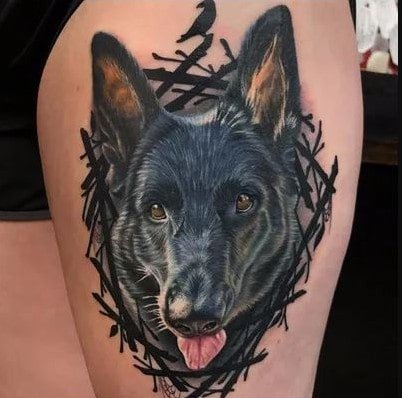
Credit: Megan Massacre

